
VideoTuna
Let's finetune video generation models!
Stars: 428
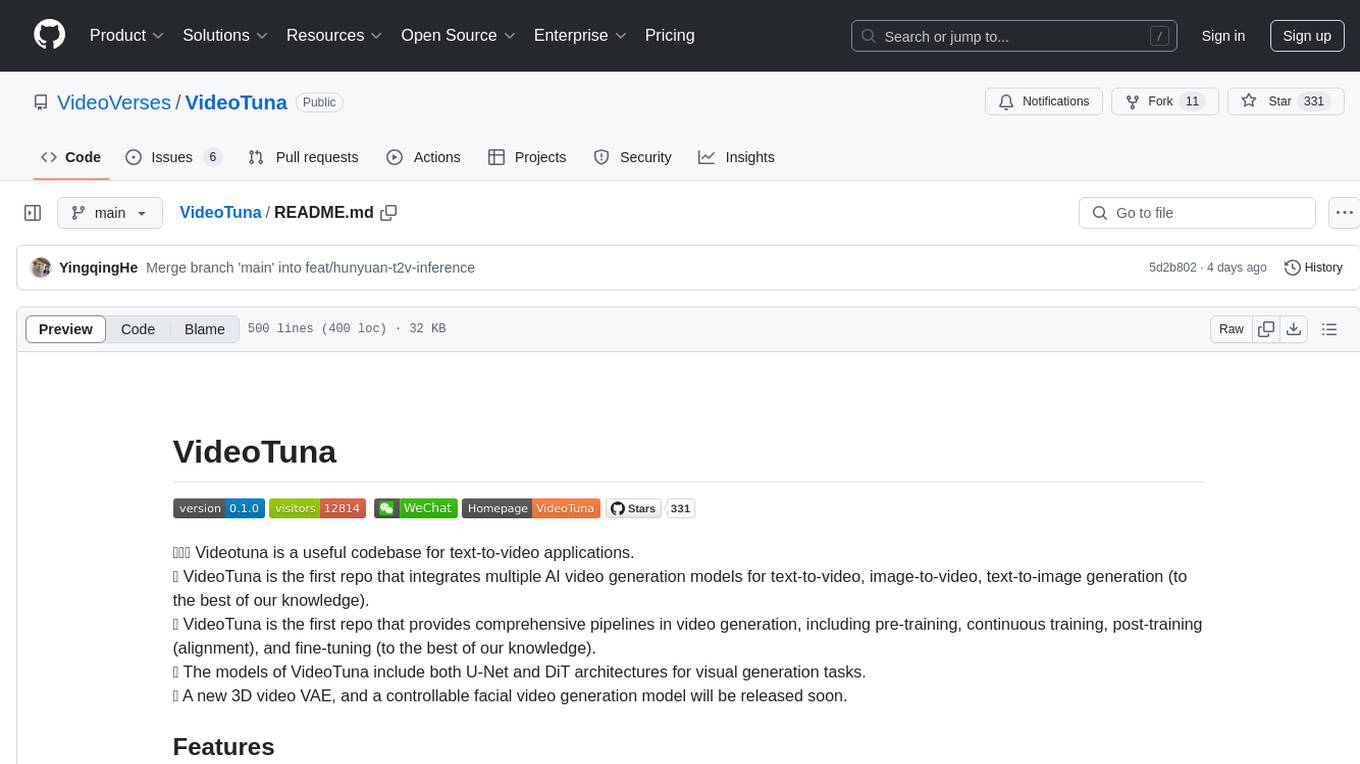
VideoTuna is a codebase for text-to-video applications that integrates multiple AI video generation models for text-to-video, image-to-video, and text-to-image generation. It provides comprehensive pipelines in video generation, including pre-training, continuous training, post-training, and fine-tuning. The models in VideoTuna include U-Net and DiT architectures for visual generation tasks, with upcoming releases of a new 3D video VAE and a controllable facial video generation model.
README:
🤗🤗🤗 Videotuna is a useful codebase for text-to-video applications.
🌟 VideoTuna is the first repo that integrates multiple AI video generation models including text-to-video (T2V), image-to-video (I2V), text-to-image (T2I), and video-to-video (V2V) generation for model inference and finetuning (to the best of our knowledge).
🌟 VideoTuna is the first repo that provides comprehensive pipelines in video generation, from fine-tuning to pre-training, continuous training, and post-training (alignment) (to the best of our knowledge).
🌟 An Emotion Control I2V model will be released soon.
🌟 All-in-one framework: Inference and fine-tune up-to-date video generation models. 🌟 Pre-training: Build your own foundational text-to-video model. 🌟 Continuous training: Keep improving your model with new data. 🌟 Domain-specific fine-tuning: Adapt models to your specific scenario. 🌟 Concept-specific fine-tuning: Teach your models with unique concepts. 🌟 Enhanced language understanding: Improve model comprehension through continuous training. 🌟 Post-processing: Enhance the videos with video-to-video enhancement model. 🌟 Post-training/Human preference alignment: Post-training with RLHF for more attractive results.
- [2025-02-03] 🐟 We update automatic code formatting from PR#27. Thanks samidarko!
- [2025-02-01] 🐟 We update Poetry migration for better dependency management and script automation from PR#25. Thanks samidarko!
- [2025-01-20] 🐟 We update the fine-tuning of
Flux-T2I. Thanks VideoTuna team! - [2025-01-01] 🐟 We update the training of
VideoVAE+in this repo. Thanks VideoTuna team! - [2025-01-01] 🐟 We update the inference of
Hunyuan VideoandMochi. Thanks VideoTuna team! - [2024-12-24] 🐟 We release a SOTA Video VAE model
VideoVAE+in this repo! Better video reconstruction than Nvidia'sCosmos-Tokenizer. Thanks VideoTuna team! - [2024-12-01] 🐟 We update the inference of
CogVideoX-1.5-T2V&I2V,Video-to-Video Enhancementfrom ModelScope, and fine-tuning ofCogVideoX-1. Thanks VideoTuna team! - [2024-11-01] 🐟 We make the VideoTuna V0.1.0 public! It supports inference of
VideoCrafter1-T2V&I2V,VideoCrafter2-T2V,DynamiCrafter-I2V,OpenSora-T2V,CogVideoX-1-2B-T2V,CogVideoX-1-T2V,Flux-T2I, as well as training and finetuning of part of these models. Thanks VideoTuna team!
Video VAE+ can accurately compress and reconstruct the input videos with fine details.
| Ground Truth | Reconstruction |
| Input 1 | Input 2 |
| Emotion: Anger | Emotion: Disgust | Emotion: Fear |
| Emotion: Happy | Emotion: Sad | Emotion: Surprise |
| Emotion: Anger | Emotion: Disgust | Emotion: Fear |
| Emotion: Happy | Emotion: Sad | Emotion: Surprise |
| T2V-Models | HxWxL | Checkpoints |
|---|---|---|
| HunyuanVideo | 720x1280x129 | Hugging Face |
| Mochi | 848x480, 3s | Hugging Face |
| CogVideoX-2B | 480x720x49 | Hugging Face |
| CogVideoX-5B | 480x720x49 | Hugging Face |
| Open-Sora 1.0 | 512×512x16 | Hugging Face |
| Open-Sora 1.0 | 256×256x16 | Hugging Face |
| Open-Sora 1.0 | 256×256x16 | Hugging Face |
| VideoCrafter2 | 320x512x16 | Hugging Face |
| VideoCrafter1 | 576x1024x16 | Hugging Face |
| VideoCrafter1 | 320x512x16 | Hugging Face |
| I2V-Models | HxWxL | Checkpoints |
|---|---|---|
| CogVideoX-5B-I2V | 480x720x49 | Hugging Face |
| DynamiCrafter | 576x1024x16 | Hugging Face |
| VideoCrafter1 | 320x512x16 | Hugging Face |
- Note: H: height; W: width; L: length
Please check docs/CHECKPOINTS.md to download all the model checkpoints.
conda create -n videotuna python=3.10 -y
conda activate videotuna
pip install poetry
poetry install
poetry run pip install "modelscope[cv]" -f https://modelscope.oss-cn-beijing.aliyuncs.com/releases/repo.htmlFlash-attn installation (Optional)
Hunyuan model uses it to reduce memory usage and speed up inference. If it is not installed, the model will run in normal mode. Install the flash-attn via:
poetry run install-flash-attn Install Poetry: https://python-poetry.org/docs/#installation
Then:
poetry config virtualenvs.in-project true # optional but recommended, will ensure the virtual env is created in the project root
poetry config virtualenvs.create true # enable this argument to ensure the virtual env is created in the project root
poetry env use python3.10 # will create the virtual env, check with `ls -l .venv`.
poetry env activate # optional because Poetry commands (e.g. `poetry install` or `poetry run <command>`) will always automatically load the virtual env.
poetry install
poetry run pip install "modelscope[cv]" -f https://modelscope.oss-cn-beijing.aliyuncs.com/releases/repo.htmlFlash-attn installation (Optional)
Hunyuan model uses it to reduce memory usage and speed up inference. If it is not installed, the model will run in normal mode. Install the flash-attn via:
poetry run install-flash-attnOn MacOS with Apple Silicon chip use docker compose because some dependencies are not supporting arm64 (e.g. bitsandbytes, decord, xformers).
First build:
docker compose build videotunaTo preserve the project's files permissions set those env variables:
export HOST_UID=$(id -u)
export HOST_GID=$(id -g)Install dependencies:
docker compose run --remove-orphans videotuna poetry env use /usr/local/bin/python
docker compose run --remove-orphans videotuna poetry run python -m pip install --upgrade pip setuptools wheel
docker compose run --remove-orphans videotuna poetry install
docker compose run --remove-orphans videotuna poetry run pip install "modelscope[cv]" -f https://modelscope.oss-cn-beijing.aliyuncs.com/releases/repo.htmlNote: installing swissarmytransformer might hang. Just try again and it should work.
Add a dependency:
docker compose run --remove-orphans videotuna poetry add wheelCheck dependencies:
docker compose run --remove-orphans videotuna poetry run pip freezeRun Poetry commands:
docker compose run --remove-orphans videotuna poetry run formatStart a terminal:
docker compose run -it --remove-orphans videotuna bashPlease follow docs/CHECKPOINTS.md to download model checkpoints. After downloading, the model checkpoints should be placed as Checkpoint Structure.
- Inference a set of text-to-video models in one command:
bash tools/video_comparison/compare.sh- The default mode is to run all models, e.g.,
inference_methods="videocrafter2;dynamicrafter;cogvideo—t2v;cogvideo—i2v;opensora" - If the users want to inference specific models, modify the
inference_methodsvariable incompare.sh, and list the desired models separated by semicolons. - Also specify the input directory via the
input_dirvariable. This directory should contain aprompts.txtfile, where each line corresponds to a prompt for the video generation. The defaultinput_dirisinputs/t2v
- The default mode is to run all models, e.g.,
- Inference a set of image-to-video models in one command:
bash tools/video_comparison/compare_i2v.sh
- Inference a specific model, run the corresponding commands as follows:
| Task | Model | Command | Length (#frames) | Resolution | Inference Time (s) | GPU Memory (GiB) |
|---|---|---|---|---|---|---|
| T2V | HunyuanVideo | poetry run inference-hunyuan |
129 | 720x1280 | 1920 | 59.15 |
| T2V | Mochi | poetry run inference-mochi |
84 | 480x848 | 109.0 | 26 |
| I2V | CogVideoX-5b-I2V | poetry run inference-cogvideox-15-5b-i2v |
49 | 480x720 | 310.4 | 4.78 |
| T2V | CogVideoX-2b | poetry run inference-cogvideo-t2v-diffusers |
49 | 480x720 | 107.6 | 2.32 |
| T2V | Open Sora V1.0 | poetry run inference-opensora-v10-16x256x256 |
16 | 256x256 | 11.2 | 23.99 |
| T2V | VideoCrafter-V2-320x512 | poetry run inference-vc2-t2v-320x512 |
16 | 320x512 | 26.4 | 10.03 |
| T2V | VideoCrafter-V1-576x1024 | poetry run inference-vc1-t2v-576x1024 |
16 | 576x1024 | 91.4 | 14.57 |
| I2V | DynamiCrafter | poetry run inference-dc-i2v-576x1024 |
16 | 576x1024 | 101.7 | 52.23 |
| I2V | VideoCrafter-V1 | poetry run inference-vc1-i2v-320x512 |
16 | 320x512 | 26.4 | 10.03 |
| T2I | Flux-dev | poetry run inference-flux-dev |
1 | 768x1360 | 238.1 | 1.18 |
| T2I | Flux-schnell | poetry run inference-flux-schnell |
1 | 768x1360 | 5.4 | 1.20 |
Flux-dev: Trained using guidance distillation, it requires 40 to 50 steps to generate high-quality images.
Flux-schnell: Trained using latent adversarial diffusion distillation, it can generate high-quality images in only 1 to 4 steps.
Please follow the docs/datasets.md to try provided toydataset or build your own datasets.
Before started, we assume you have finished the following two preliminary steps:
- Install the environment
- Prepare the dataset
- Download the checkpoints and get these two checkpoints
ll checkpoints/videocrafter/t2v_v2_512/model.ckpt
ll checkpoints/stablediffusion/v2-1_512-ema/model.ckpt
First, run this command to convert the VC2 checkpoint as we make minor modifications on the keys of the state dict of the checkpoint. The converted checkpoint will be automatically save at checkpoints/videocrafter/t2v_v2_512/model_converted.ckpt.
python tools/convert_checkpoint.py --input_path checkpoints/videocrafter/t2v_v2_512/model.ckpt
Second, run this command to start training on the single GPU. The training results will be automatically saved at results/train/${CURRENT_TIME}_${EXPNAME}
poetry run train-videocrafter-v2
We support lora finetuning to make the model to learn new concepts/characters/styles.
- Example config file:
configs/001_videocrafter2/vc2_t2v_lora.yaml - Training lora based on VideoCrafter2:
bash shscripts/train_videocrafter_lora.sh - Inference the trained models:
bash shscripts/inference_vc2_t2v_320x512_lora.sh
We support open-sora finetuning, you can simply run the following commands:
# finetune the Open-Sora v1.0
poetry run train-opensorav10We support flux lora finetuning, you can simply run the following commands:
# finetune the Flux-Lora
poetry run train-flux-lora
# inference the lora model
poetry run inference-flux-loraIf you want to build your own dataset, please organize your data as inputs/t2i/flux/plushie_teddybear, which contains the training images and the corresponding text prompt files, as shown in the following directory structure. Then modify the instance_data_dir inconfigs/006_flux/multidatabackend.json.
owndata/
├── img1.jpg
├── img2.jpg
├── img3.jpg
├── ...
├── prompt1.txt # prompt of img1.jpg
├── prompt2.txt # prompt of img2.jpg
├── prompt3.txt # prompt of img3.jpg
├── ...
We support VBench evaluation to evaluate the T2V generation performance. Please check eval/README.md for details.
Git hooks are handled with pre-commit library.
Run the following command to install hooks on commit. They will check formatting, linting and types.
poetry run pre-commit install
poetry run pre-commit install --hook-type commit-msgpoetry run pre-commit run --all-filesWe thank the following repos for sharing their awesome models and codes!
- Mochi: A new SOTA in open-source video generation models
- VideoCrafter2: Overcoming Data Limitations for High-Quality Video Diffusion Models
- VideoCrafter1: Open Diffusion Models for High-Quality Video Generation
- DynamiCrafter: Animating Open-domain Images with Video Diffusion Priors
- Open-Sora: Democratizing Efficient Video Production for All
- CogVideoX: Text-to-Video Diffusion Models with An Expert Transformer
- VADER: Video Diffusion Alignment via Reward Gradients
- VBench: Comprehensive Benchmark Suite for Video Generative Models
- Flux: Text-to-image models from Black Forest Labs.
- SimpleTuner: A fine-tuning kit for text-to-image generation.
- LLMs-Meet-MM-Generation: A paper collection of utilizing LLMs for multimodal generation (image, video, 3D and audio).
- MMTrail: A multimodal trailer video dataset with language and music descriptions.
- Seeing-and-Hearing: A versatile framework for Joint VA generation, V2A, A2V, and I2A.
- Self-Cascade: A Self-Cascade model for higher-resolution image and video generation.
- ScaleCrafter and HiPrompt: Free method for higher-resolution image and video generation.
- FreeTraj and FreeNoise: Free method for video trajectory control and longer-video generation.
- Follow-Your-Emoji, Follow-Your-Click, and Follow-Your-Pose: Follow family for controllable video generation.
- Animate-A-Story: A framework for storytelling video generation.
- LVDM: Latent Video Diffusion Model for long video generation and text-to-video generation.
Please follow CC-BY-NC-ND. If you want a license authorization, please contact the project leads Yingqing He ([email protected]) and Yazhou Xing ([email protected]).
@software{videotuna,
author = {Yingqing He and Yazhou Xing and Zhefan Rao and Haoyu Wu and Zhaoyang Liu and Jingye Chen and Pengjun Fang and Jiajun Li and Liya Ji and Runtao Liu and Xiaowei Chi and Yang Fei and Guocheng Shao and Yue Ma and Qifeng Chen},
title = {VideoTuna: A Powerful Toolkit for Video Generation with Model Fine-Tuning and Post-Training},
month = {Nov},
year = {2024},
url = {https://github.com/VideoVerses/VideoTuna}
}For Tasks:
Click tags to check more tools for each tasksFor Jobs:
Alternative AI tools for VideoTuna
Similar Open Source Tools

VideoTuna
VideoTuna is a codebase for text-to-video applications that integrates multiple AI video generation models for text-to-video, image-to-video, and text-to-image generation. It provides comprehensive pipelines in video generation, including pre-training, continuous training, post-training, and fine-tuning. The models in VideoTuna include U-Net and DiT architectures for visual generation tasks, with upcoming releases of a new 3D video VAE and a controllable facial video generation model.

ichigo
Ichigo is a local real-time voice AI tool that uses an early fusion technique to extend a text-based LLM to have native 'listening' ability. It is an open research experiment with improved multiturn capabilities and the ability to refuse processing inaudible queries. The tool is designed for open data, open weight, on-device Siri-like functionality, inspired by Meta's Chameleon paper. Ichigo offers a web UI demo and Gradio web UI for users to interact with the tool. It has achieved enhanced MMLU scores, stronger context handling, advanced noise management, and improved multi-turn capabilities for a robust user experience.
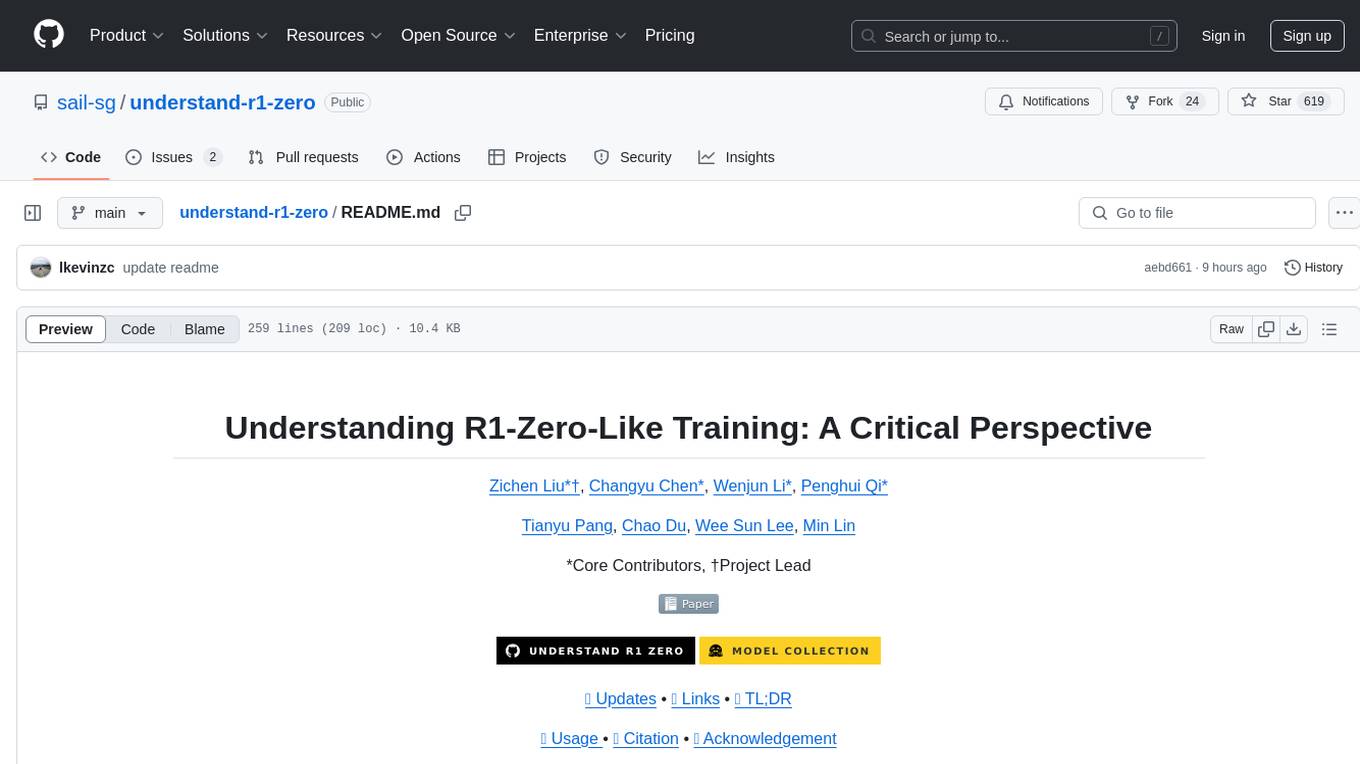
understand-r1-zero
The 'understand-r1-zero' repository focuses on understanding R1-Zero-like training from a critical perspective. It provides insights into base models and reinforcement learning components, highlighting findings and proposing solutions for biased optimization. The repository offers a minimalist recipe for R1-Zero training, detailing the RL-tuning process and achieving state-of-the-art performance with minimal compute resources. It includes codebase, models, and paper related to R1-Zero training implemented with the Oat framework, emphasizing research-friendly and efficient LLM RL techniques.

ComfyUI-IF_AI_tools
ComfyUI-IF_AI_tools is a set of custom nodes for ComfyUI that allows you to generate prompts using a local Large Language Model (LLM) via Ollama. This tool enables you to enhance your image generation workflow by leveraging the power of language models.
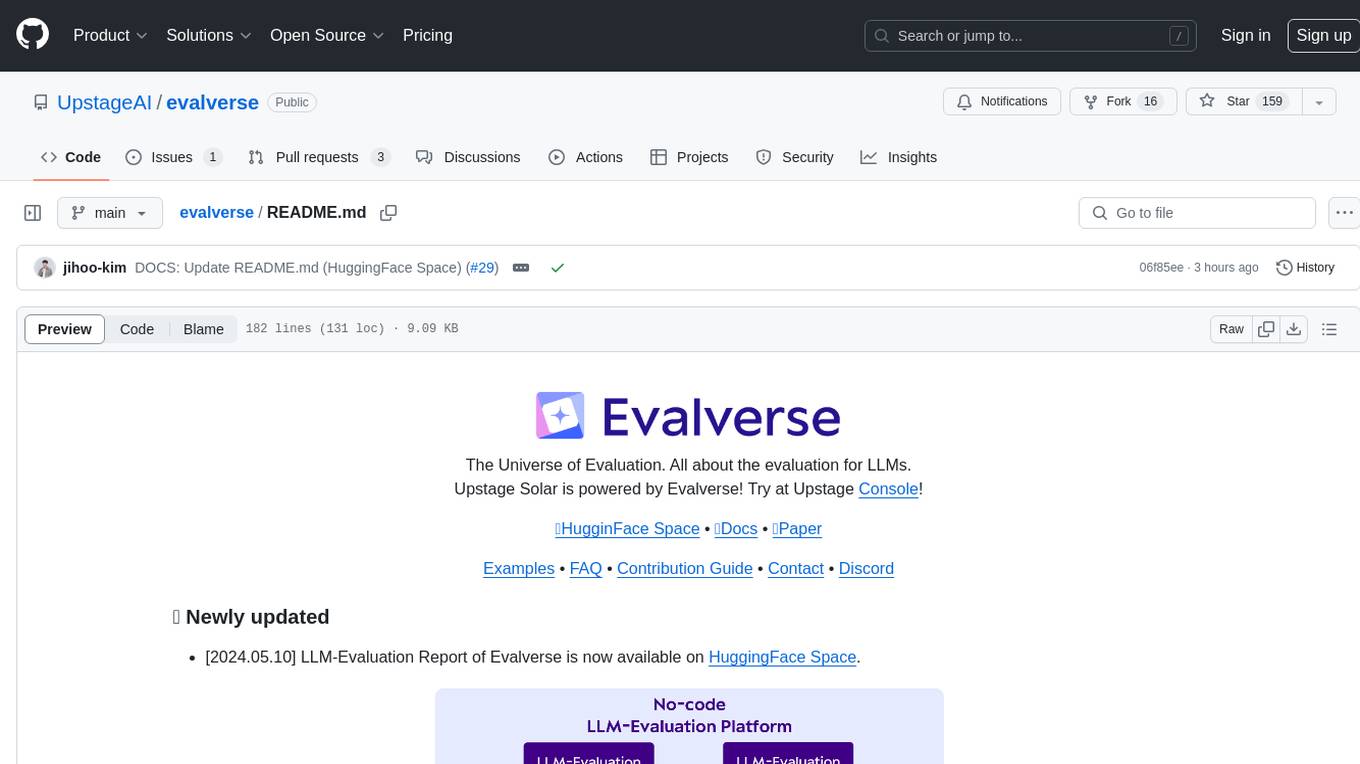
evalverse
Evalverse is an open-source project designed to support Large Language Model (LLM) evaluation needs. It provides a standardized and user-friendly solution for processing and managing LLM evaluations, catering to AI research engineers and scientists. Evalverse supports various evaluation methods, insightful reports, and no-code evaluation processes. Users can access unified evaluation with submodules, request evaluations without code via Slack bot, and obtain comprehensive reports with scores, rankings, and visuals. The tool allows for easy comparison of scores across different models and swift addition of new evaluation tools.
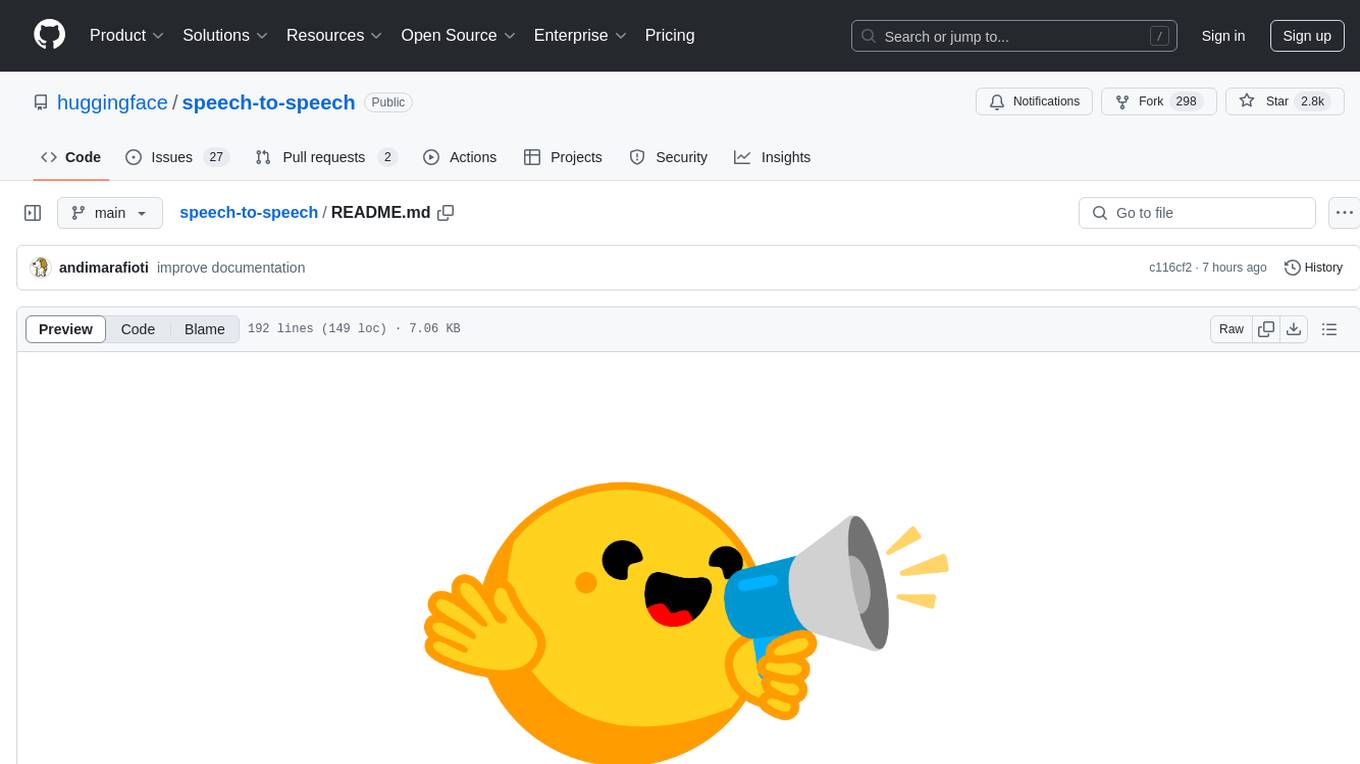
speech-to-speech
This repository implements a speech-to-speech cascaded pipeline with consecutive parts including Voice Activity Detection (VAD), Speech to Text (STT), Language Model (LM), and Text to Speech (TTS). It aims to provide a fully open and modular approach by leveraging models available on the Transformers library via the Hugging Face hub. The code is designed for easy modification, with each component implemented as a class. Users can run the pipeline either on a server/client approach or locally, with detailed setup and usage instructions provided in the readme.

LongLoRA
LongLoRA is a tool for efficient fine-tuning of long-context large language models. It includes LongAlpaca data with long QA data collected and short QA sampled, models from 7B to 70B with context length from 8k to 100k, and support for GPTNeoX models. The tool supports supervised fine-tuning, context extension, and improved LoRA fine-tuning. It provides pre-trained weights, fine-tuning instructions, evaluation methods, local and online demos, streaming inference, and data generation via Pdf2text. LongLoRA is licensed under Apache License 2.0, while data and weights are under CC-BY-NC 4.0 License for research use only.
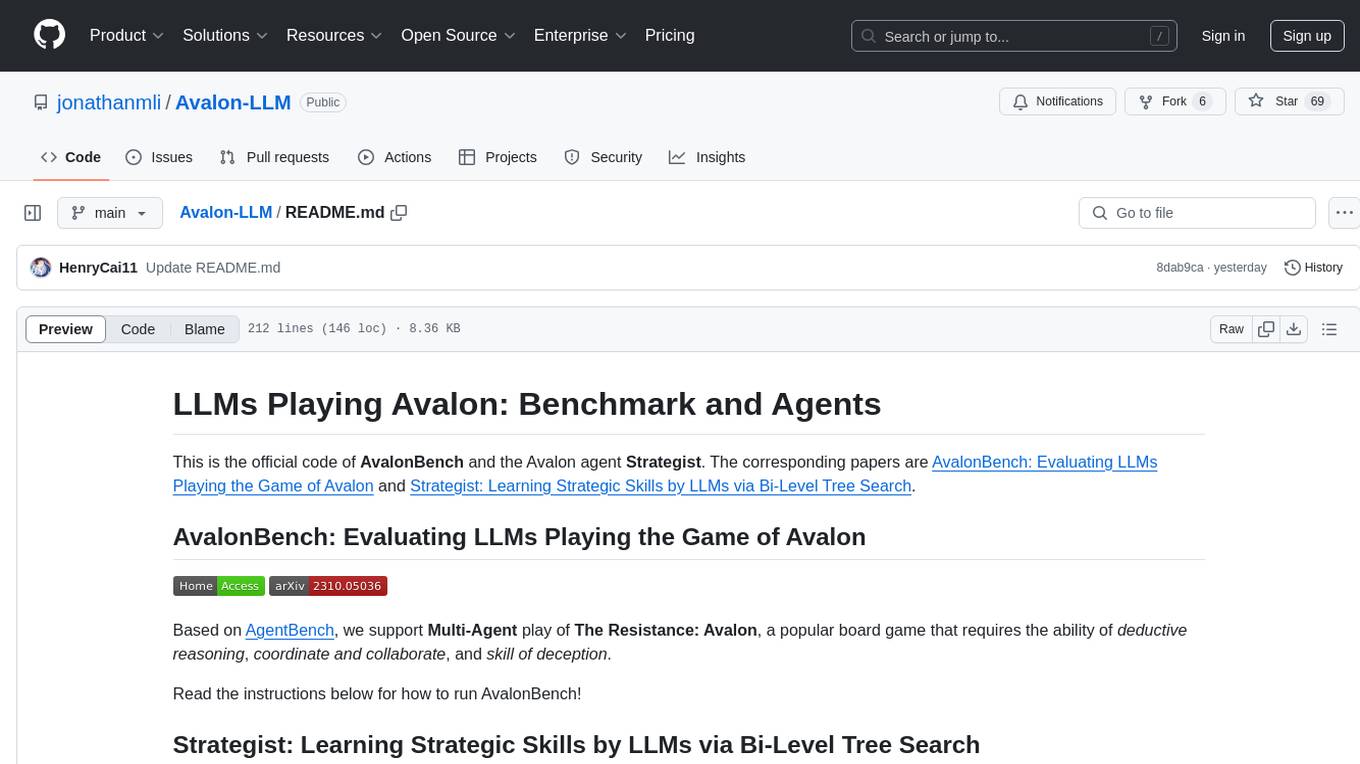
Avalon-LLM
Avalon-LLM is a repository containing the official code for AvalonBench and the Avalon agent Strategist. AvalonBench evaluates Large Language Models (LLMs) playing The Resistance: Avalon, a board game requiring deductive reasoning, coordination, collaboration, and deception skills. Strategist utilizes LLMs to learn strategic skills through self-improvement, including high-level strategic evaluation and low-level execution guidance. The repository provides instructions for running AvalonBench, setting up Strategist, and conducting experiments with different agents in the game environment.
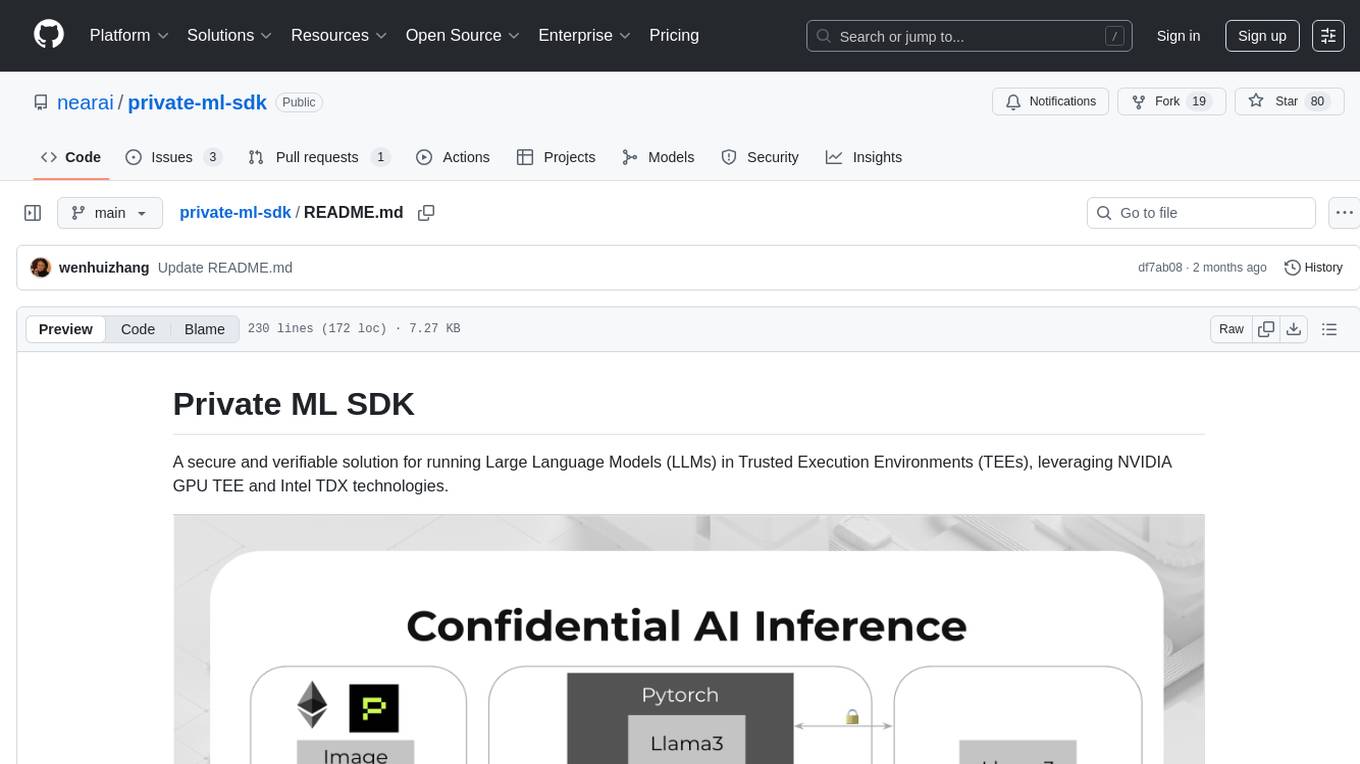
private-ml-sdk
Private ML SDK is a secure solution for running Large Language Models (LLMs) in Trusted Execution Environments (TEEs) using NVIDIA GPU TEE and Intel TDX technologies. It provides a tamper-proof data processing environment with secure execution, open-source builds, and nearly native speed performance. The system includes components like Secure Compute Environment, Remote Attestation, Secure Communication, and Key Management Service (KMS). Users can build TDX guest images, run Local KMS, and TDX guest images on TDX host machines with Nvidia GPUs. The SDK offers verifiable execution results and high performance for LLM workloads.
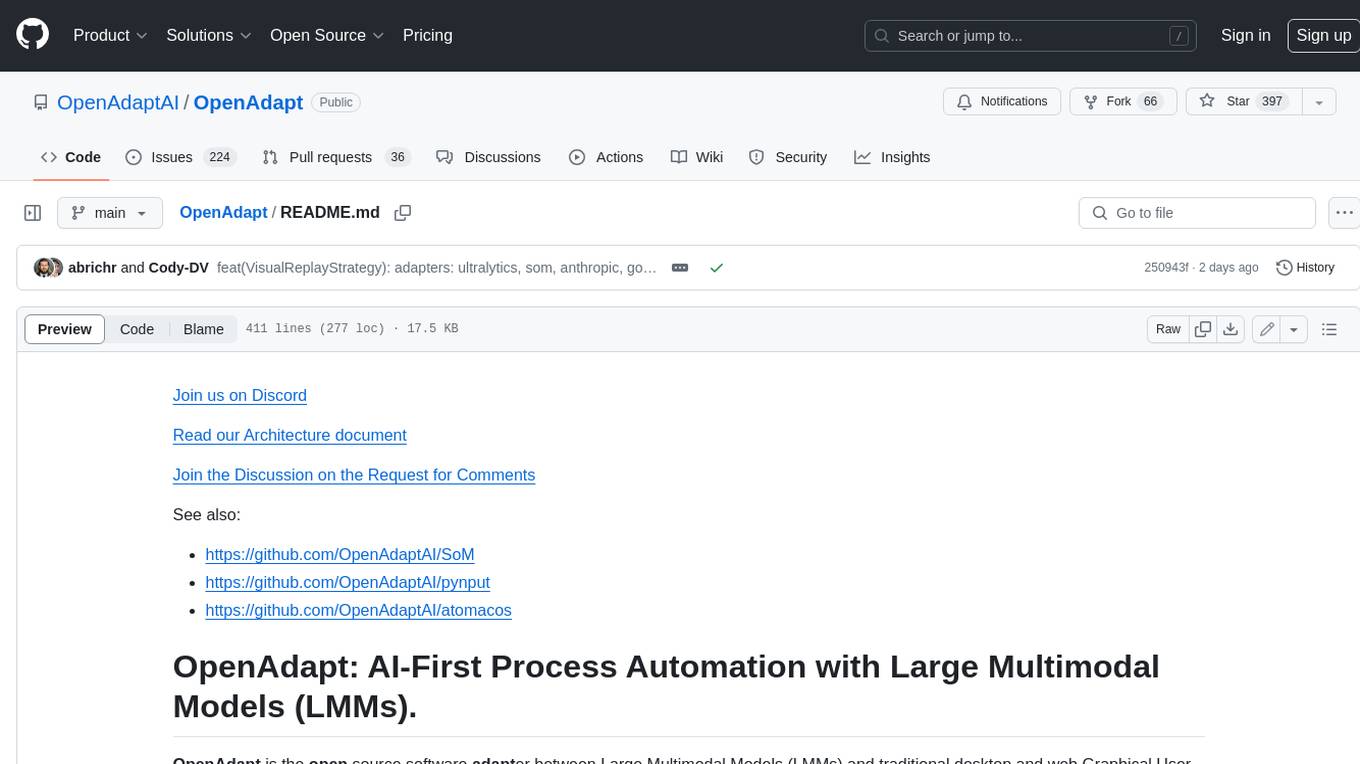
OpenAdapt
OpenAdapt is an open-source software adapter between Large Multimodal Models (LMMs) and traditional desktop and web Graphical User Interfaces (GUIs). It aims to automate repetitive GUI workflows by leveraging the power of LMMs. OpenAdapt records user input and screenshots, converts them into tokenized format, and generates synthetic input via transformer model completions. It also analyzes recordings to generate task trees and replay synthetic input to complete tasks. OpenAdapt is model agnostic and generates prompts automatically by learning from human demonstration, ensuring that agents are grounded in existing processes and mitigating hallucinations. It works with all types of desktop GUIs, including virtualized and web, and is open source under the MIT license.

gemini-next-chat
Gemini Next Chat is an open-source, extensible high-performance Gemini chatbot framework that supports one-click free deployment of private Gemini web applications. It provides a simple interface with image recognition and voice conversation, supports multi-modal models, talk mode, visual recognition, assistant market, support plugins, conversation list, full Markdown support, privacy and security, PWA support, well-designed UI, fast loading speed, static deployment, and multi-language support.
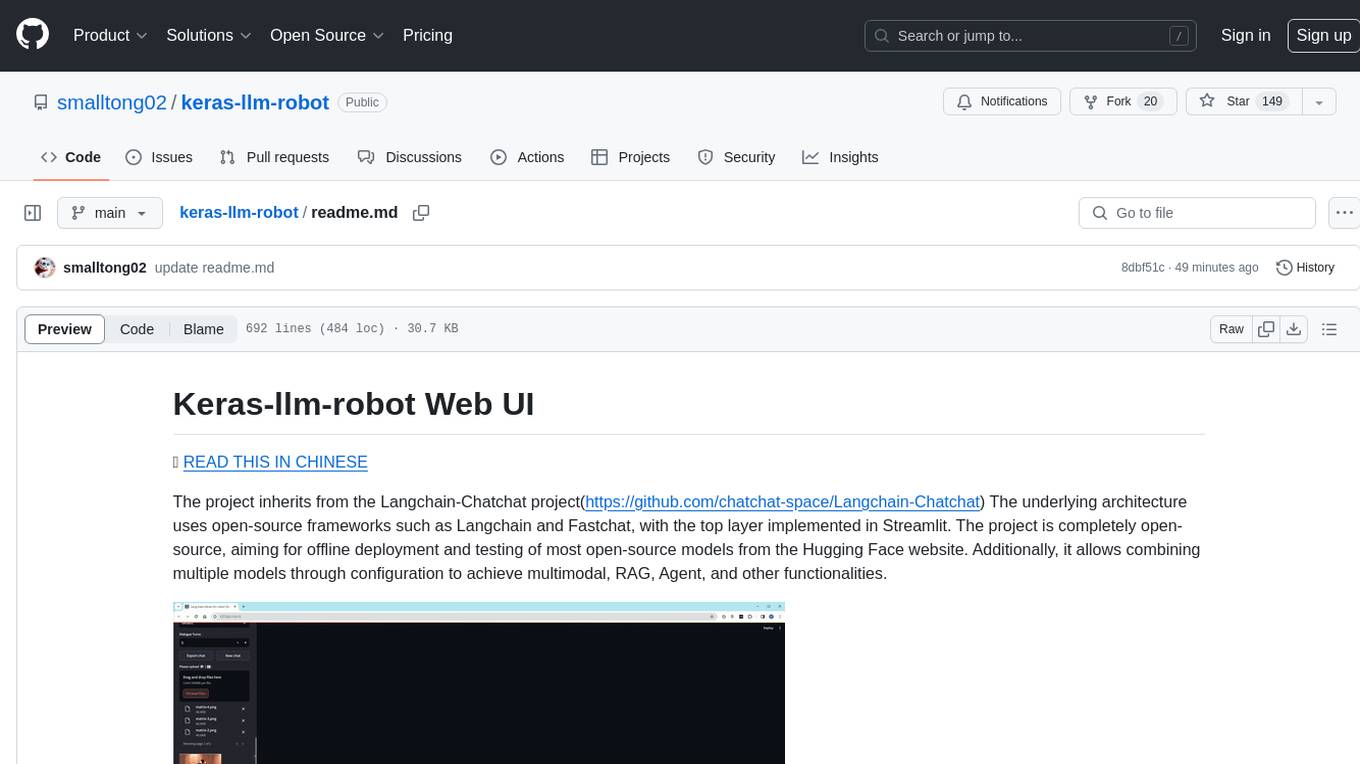
keras-llm-robot
The Keras-llm-robot Web UI project is an open-source tool designed for offline deployment and testing of various open-source models from the Hugging Face website. It allows users to combine multiple models through configuration to achieve functionalities like multimodal, RAG, Agent, and more. The project consists of three main interfaces: chat interface for language models, configuration interface for loading models, and tools & agent interface for auxiliary models. Users can interact with the language model through text, voice, and image inputs, and the tool supports features like model loading, quantization, fine-tuning, role-playing, code interpretation, speech recognition, image recognition, network search engine, and function calling.
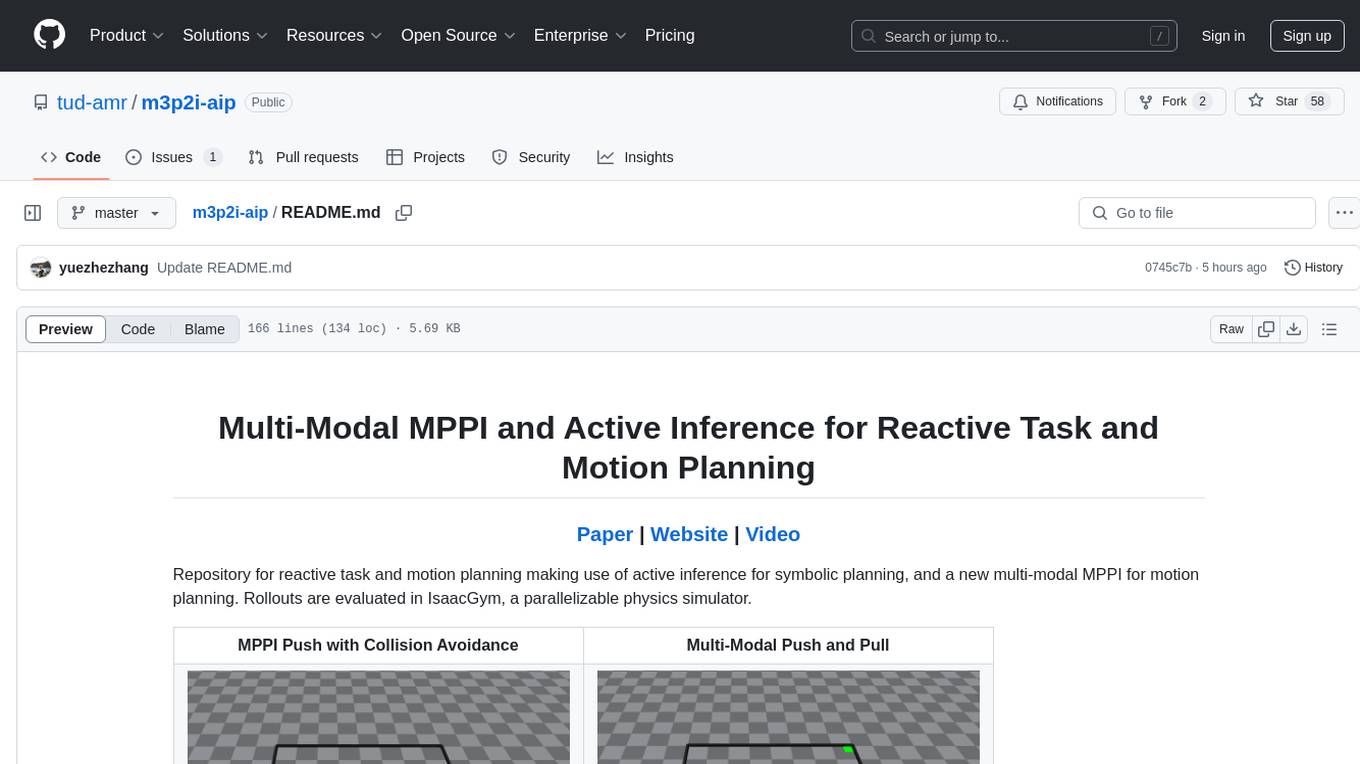
m3p2i-aip
Repository for reactive task and motion planning using active inference for symbolic planning and multi-modal MPPI for motion planning. Rollouts are evaluated in IsaacGym, a parallelizable physics simulator. The tool provides functionalities for push, pull, pick, and multi-modal push-pull tasks with collision avoidance.
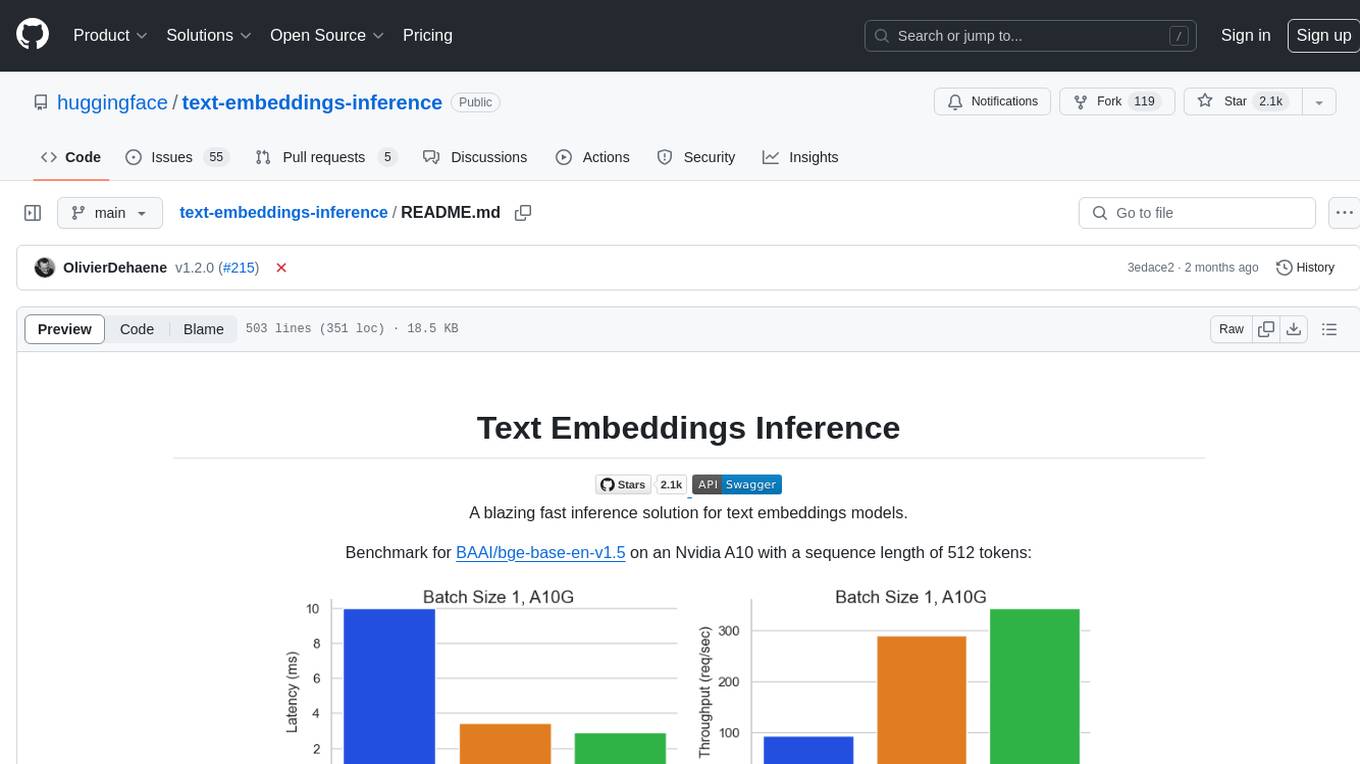
text-embeddings-inference
Text Embeddings Inference (TEI) is a toolkit for deploying and serving open source text embeddings and sequence classification models. TEI enables high-performance extraction for popular models like FlagEmbedding, Ember, GTE, and E5. It implements features such as no model graph compilation step, Metal support for local execution on Macs, small docker images with fast boot times, token-based dynamic batching, optimized transformers code for inference using Flash Attention, Candle, and cuBLASLt, Safetensors weight loading, and production-ready features like distributed tracing with Open Telemetry and Prometheus metrics.
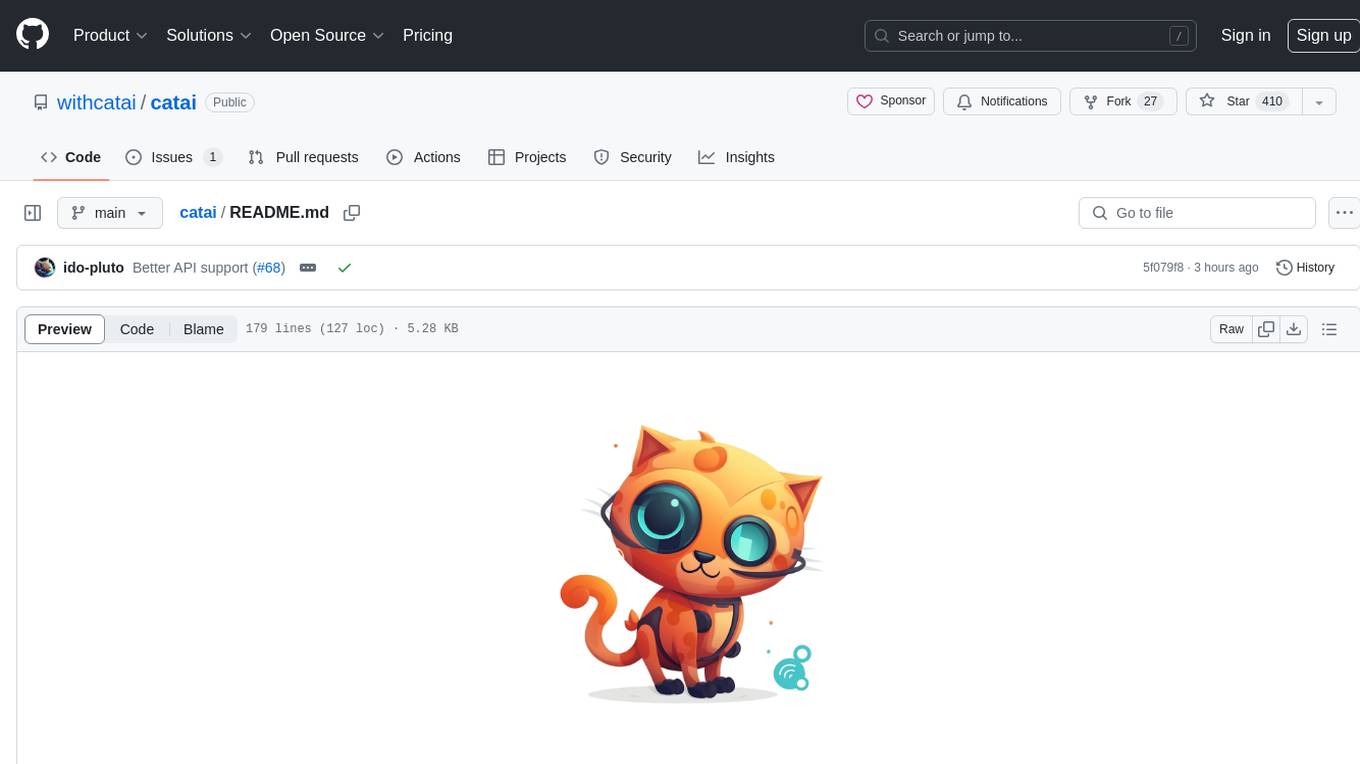
catai
CatAI is a tool that allows users to run GGUF models on their computer with a chat UI. It serves as a local AI assistant inspired by Node-Llama-Cpp and Llama.cpp. The tool provides features such as auto-detecting programming language, showing original messages by clicking on user icons, real-time text streaming, and fast model downloads. Users can interact with the tool through a CLI that supports commands for installing, listing, setting, serving, updating, and removing models. CatAI is cross-platform and supports Windows, Linux, and Mac. It utilizes node-llama-cpp and offers a simple API for asking model questions. Additionally, developers can integrate the tool with node-llama-cpp@beta for model management and chatting. The configuration can be edited via the web UI, and contributions to the project are welcome. The tool is licensed under Llama.cpp's license.
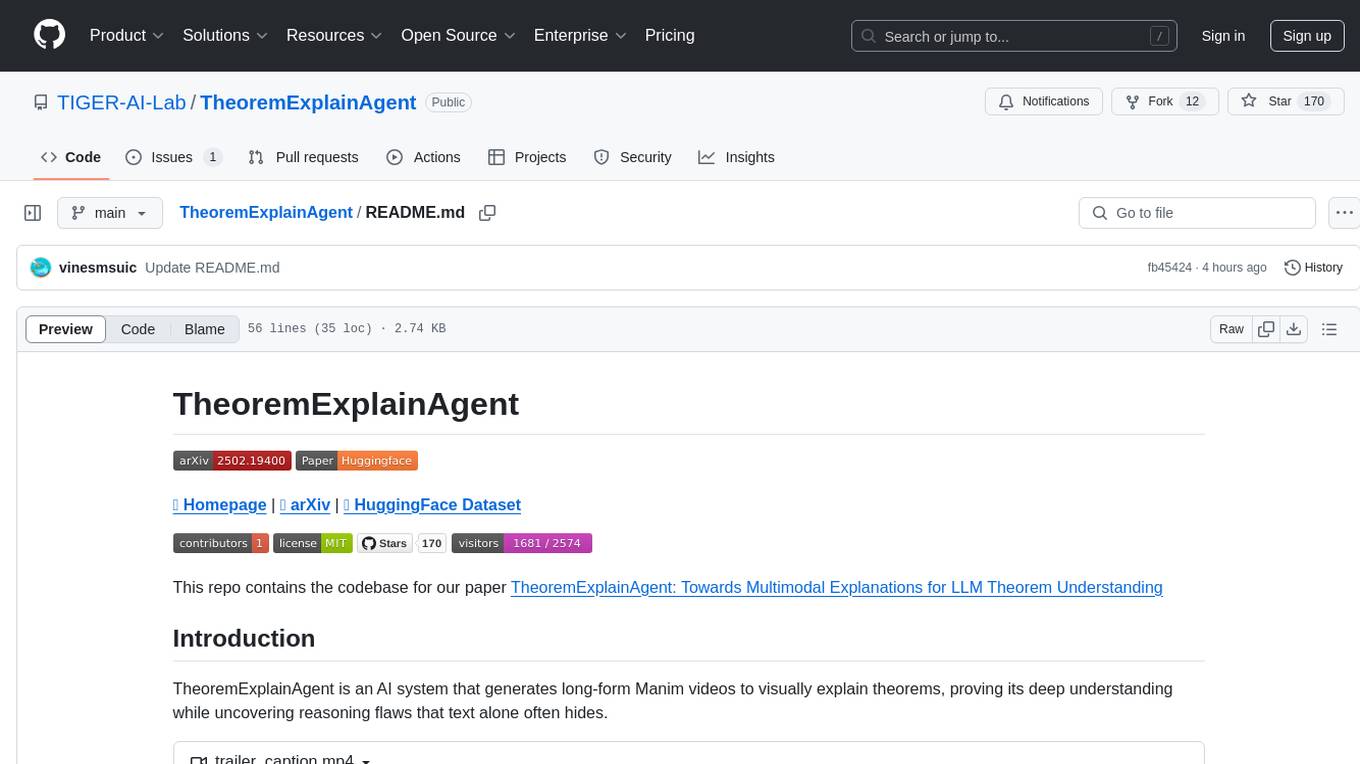
TheoremExplainAgent
TheoremExplainAgent is an AI system that generates long-form Manim videos to visually explain theorems, proving its deep understanding while uncovering reasoning flaws that text alone often hides. The codebase for the paper 'TheoremExplainAgent: Towards Multimodal Explanations for LLM Theorem Understanding' is available in this repository. It provides a tool for creating multimodal explanations for theorem understanding using AI technology.
For similar tasks

VideoTuna
VideoTuna is a codebase for text-to-video applications that integrates multiple AI video generation models for text-to-video, image-to-video, and text-to-image generation. It provides comprehensive pipelines in video generation, including pre-training, continuous training, post-training, and fine-tuning. The models in VideoTuna include U-Net and DiT architectures for visual generation tasks, with upcoming releases of a new 3D video VAE and a controllable facial video generation model.
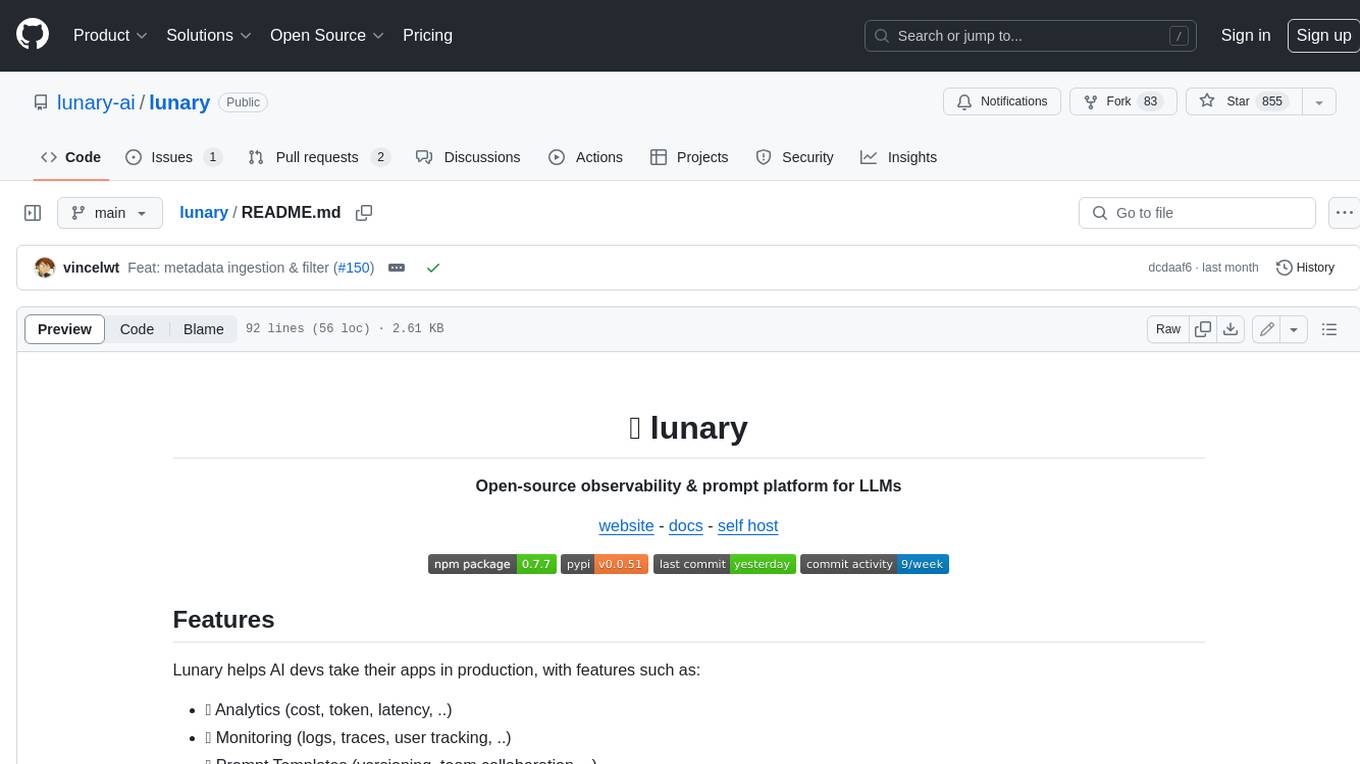
lunary
Lunary is an open-source observability and prompt platform for Large Language Models (LLMs). It provides a suite of features to help AI developers take their applications into production, including analytics, monitoring, prompt templates, fine-tuning dataset creation, chat and feedback tracking, and evaluations. Lunary is designed to be usable with any model, not just OpenAI, and is easy to integrate and self-host.
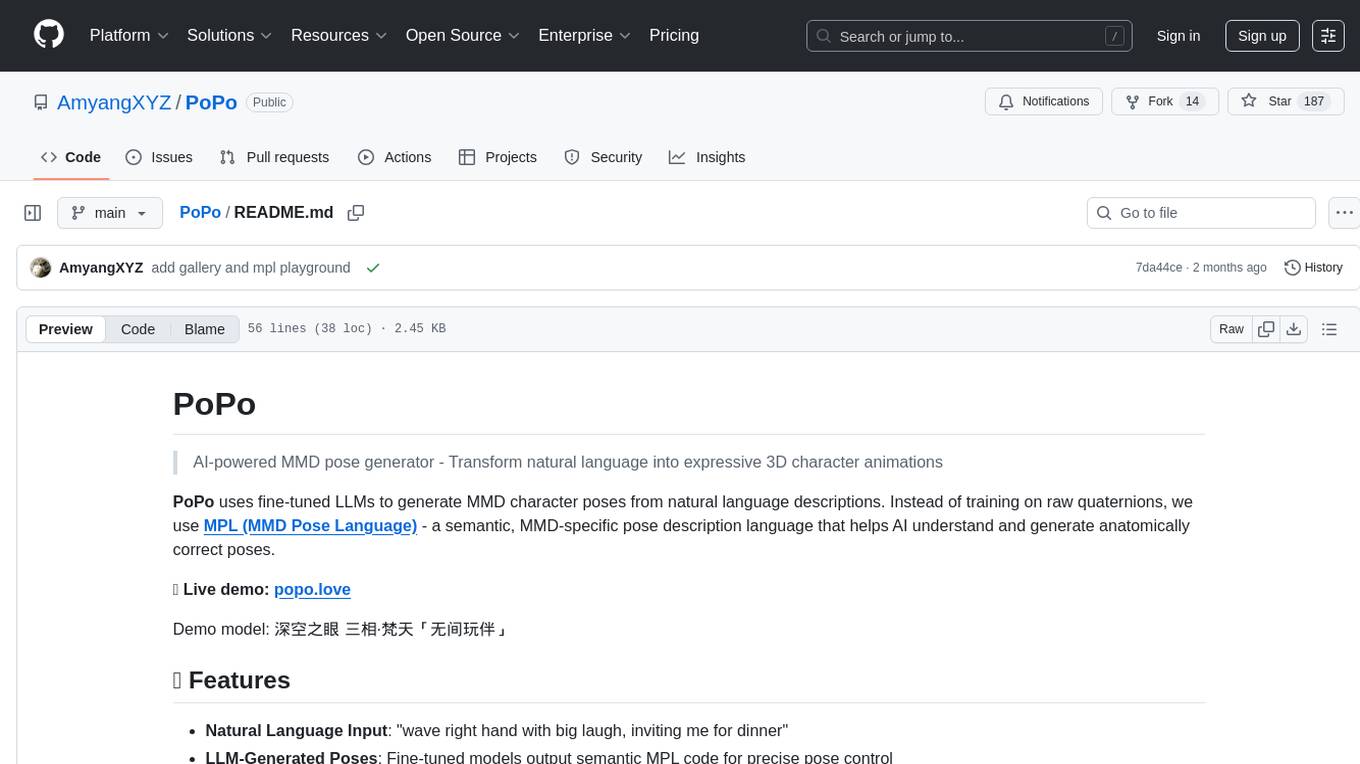
PoPo
PoPo is an AI-powered MMD pose generator that transforms natural language descriptions into expressive 3D character animations. It uses MPL (MMD Pose Language) to generate anatomically correct poses, providing real-time rendering and precise pose control. The tool fine-tunes LLMs with MPL, resulting in better training convergence, consistent outputs, anatomically correct poses, and debuggable results. The technology stack includes Next.js, Babylon.js, MPL, fine-tuned GPT-4o-mini, and Vercel for deployment. By training on semantic MPL instead of raw quaternions, PoPo enables the AI to understand the 'grammar' of human movement.
For similar jobs

weave
Weave is a toolkit for developing Generative AI applications, built by Weights & Biases. With Weave, you can log and debug language model inputs, outputs, and traces; build rigorous, apples-to-apples evaluations for language model use cases; and organize all the information generated across the LLM workflow, from experimentation to evaluations to production. Weave aims to bring rigor, best-practices, and composability to the inherently experimental process of developing Generative AI software, without introducing cognitive overhead.

LLMStack
LLMStack is a no-code platform for building generative AI agents, workflows, and chatbots. It allows users to connect their own data, internal tools, and GPT-powered models without any coding experience. LLMStack can be deployed to the cloud or on-premise and can be accessed via HTTP API or triggered from Slack or Discord.

VisionCraft
The VisionCraft API is a free API for using over 100 different AI models. From images to sound.

kaito
Kaito is an operator that automates the AI/ML inference model deployment in a Kubernetes cluster. It manages large model files using container images, avoids tuning deployment parameters to fit GPU hardware by providing preset configurations, auto-provisions GPU nodes based on model requirements, and hosts large model images in the public Microsoft Container Registry (MCR) if the license allows. Using Kaito, the workflow of onboarding large AI inference models in Kubernetes is largely simplified.

PyRIT
PyRIT is an open access automation framework designed to empower security professionals and ML engineers to red team foundation models and their applications. It automates AI Red Teaming tasks to allow operators to focus on more complicated and time-consuming tasks and can also identify security harms such as misuse (e.g., malware generation, jailbreaking), and privacy harms (e.g., identity theft). The goal is to allow researchers to have a baseline of how well their model and entire inference pipeline is doing against different harm categories and to be able to compare that baseline to future iterations of their model. This allows them to have empirical data on how well their model is doing today, and detect any degradation of performance based on future improvements.

tabby
Tabby is a self-hosted AI coding assistant, offering an open-source and on-premises alternative to GitHub Copilot. It boasts several key features: * Self-contained, with no need for a DBMS or cloud service. * OpenAPI interface, easy to integrate with existing infrastructure (e.g Cloud IDE). * Supports consumer-grade GPUs.

spear
SPEAR (Simulator for Photorealistic Embodied AI Research) is a powerful tool for training embodied agents. It features 300 unique virtual indoor environments with 2,566 unique rooms and 17,234 unique objects that can be manipulated individually. Each environment is designed by a professional artist and features detailed geometry, photorealistic materials, and a unique floor plan and object layout. SPEAR is implemented as Unreal Engine assets and provides an OpenAI Gym interface for interacting with the environments via Python.

Magick
Magick is a groundbreaking visual AIDE (Artificial Intelligence Development Environment) for no-code data pipelines and multimodal agents. Magick can connect to other services and comes with nodes and templates well-suited for intelligent agents, chatbots, complex reasoning systems and realistic characters.


